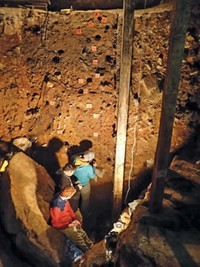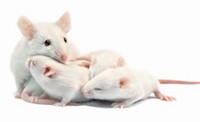Advertisement
Grab your lab coat. Let's get started
Welcome!
Welcome!
Create an account below to get 6 C&EN articles per month, receive newsletters and more - all free.
It seems this is your first time logging in online. Please enter the following information to continue.
As an ACS member you automatically get access to this site. All we need is few more details to create your reading experience.
Not you? Sign in with a different account.
Not you? Sign in with a different account.
ERROR 1
ERROR 1
ERROR 2
ERROR 2
ERROR 2
ERROR 2
ERROR 2
Password and Confirm password must match.
If you have an ACS member number, please enter it here so we can link this account to your membership. (optional)
ERROR 2
ACS values your privacy. By submitting your information, you are gaining access to C&EN and subscribing to our weekly newsletter. We use the information you provide to make your reading experience better, and we will never sell your data to third party members.
Biological Chemistry
Mitochondrial DNA from Mom and Dad
Recent results challenge assumption that humans inherit this DNA solely from the mother
by CELIA M. HENRY, C&EN WASHINGTON
June 21, 2004
| A version of this story appeared in
Volume 82, Issue 25

Mitochondrial DNA (MtDNA) is a circular DNA molecule that is essential for mitochondrial function and, unlike the nuclear genome, is present in multiple copies in most cells. MtDNA has been thought to be inherited only from the mother and therefore not subject to the process known as recombination, which is the exchange of homologous segments between two DNA molecules that results in the formation of new DNA sequences.
Armed with maternal inheritance and known mutation rates, scientists have used mtDNA as a clock in studies of human origins and evolution. Recent work, however, shows that the assumptions about maternal inheritance and recombination may not be as ironclad as previously thought.
In 2002, Marianne Schwartz and John Vissing at Copenhagen University Hospital (Rigshospitalet), in Denmark, revealed that they had a patient with a mitochondrial disorder who had inherited mtDNA from his father [N. Engl. J. Med., 347, 576 (2002)]. Paternal mtDNA accounted for 90% of the mtDNA in the patient's muscle cells.
Their work attracted the attention of Konstantin Khrapko, who is an assistant professor at Harvard Medical School. "When Schwartz and Vissing published their NEJM paper, I realized that their case can be used to test for recombination," Khrapko says.
Khrapko and his colleagues have collaborated with Schwartz and Vissing to show that the mtDNA in this patient has undergone recombination [Science, 304, 981 (2004)]--that is, single DNA molecules contain sequences inherited maternally and paternally.
Khrapko and his coworkers also have found evidence for recombination in human mtDNA in a different system, but that work is still in progress. "There are many researchers who reject recombination in humans and in higher animals," he says. "Our evidence supports those who accept it, though for them our results may seem trivial."
The researchers used a paternal-specific endonuclease to cleave the mtDNA and then amplified the DNA using the polymerase chain reaction (PCR)--starting from single mtDNA molecules to avoid in vitro recombination. They recovered 450 PCR products that contained a maternal sequence at the cleavage site and screened them for paternal sequences at another position, yielding 33 such products. The DNA in those products contained alternating maternal and paternal sequences, a hallmark of recombination.
They found two structural classes of recombinants: molecules containing short paternal sequences in otherwise maternally derived sequences and those with paternal sequences flanking maternal sequences.
Recombinants accounted for about 0.7% of the total mtDNA in the patient's muscles. They don't know at this point whether the recombinants can be inherited by subsequent generations.
Khrapko points out that there is confusion with the term recombination. Some people are referring to recombination at the molecular level when they use the term; others are referring to the manifestation of this process at the population level. At the molecular level, recombination is simply the exchange of DNA between mtDNA molecules.
"Traces of recombination in the population additionally require paternal inheritance of mtDNA, sufficient mixing of maternal and paternal DNA within tissue to allow exchanges between them, and inheritance of the recombinants through the germ line," Khrapko says. "Furthermore, all these processes should happen frequently enough; otherwise they will leave no record at the population level."

Khrapko's current results apply only to the molecular level. They also demonstrate that, if inherited, paternal mtDNA does have a chance to recombine with maternal mtDNA. "If there were no recombination at the molecular level, then there should be none at the population level either," he says. "But occurrence of recombination on the molecular level does not guarantee that it will be visible at the population level."
Five years ago, John Maynard Smith, who died recently at the age of 84, and Adam C. Eyre-Walker, codirector of the Centre for the Study of Evolution at the University of Sussex, Brighton, England, were among the first to suggest the possibility of recombination in mtDNA [Science, 286, 2524 (1999)]. That suggestion was controversial from the outset.
"I think what's really generated the controversy is a certain amount of inertia in the field and a certain amount of fear that recombination of mitochondrial DNA is going to upset an awful lot of the work that previously has been done in mitochondrial DNA, particularly in humans," Eyre-Walker says. "However, that's not really the case. It's not going to upset every result we've ever obtained using mitochondrial DNA."

SCIENTISTS HAVE KNOWN for a while that human mitochondria have the enzymes needed for DNA recombination. "It's almost inevitable that we would find occasion in which recombination had occurred. Now, we've actually got a concrete demonstration of it," Eyre-Walker says. "Of course, what we really need to know now is how often it occurs. That's going to be a much harder question to answer."
The research area in which mtDNA recombination has the greatest implications is in the study of human origins and the so-called mitochondrial Eve hypothesis. "There's been quite a lot of interest in dating our most recent female common ancestor," Eyre-Walker says. "If you're specifically looking at something like our most recent common female ancestor, then [mtDNA recombination] clearly has implications. As soon as you get paternal inheritance, you're not looking at the thing you think you're looking at."
Erika Hagelberg, a biologist who studies ancient DNA at the University of Oslo, in Norway, has also been advocating recombination in mtDNA. She believes that people get upset because the suggestion of recombination "muddles the picture" that scientists have painted of human ancestry.
"There wouldn't be a mitochondrial Eve because the DNA in living women would not trace back to a single female ancestor. They would trace back to lots of little bits of mitochondrial DNA in many ancestors," Hagelberg says. "Many of us write papers supporting the idea of mitochondrial Eve in one way or another. It's part of the paradigm. To challenge that upsets people."
Hagelberg believes that mitochondrial DNA inheritance is more complicated than many people would suggest. "When you analyze the DNA sequences, it is clear that inheritance is not straightforward and one can interpret them in different ways."
Earlier claims of recombination were based on purely statistical arguments that some scientists found fault with. "At least in this paper, there's some direct evidence," Hagelberg says.
"We've got results that are anomalous and consistent with recombination," she says. "So, why shouldn't it happen? I think the scientific establishment gets stuck when it comes to human work. I think it's because of this idea that humans are [special]."
Mitochondrial DNA has been used to estimate the time of events in human evolutionary history. "A lot of these time estimates contradict the dates for human expansions or migrations proposed by archaeologists and historical linguists. It seems as if we could rewrite prehistory using these estimates," Hagelberg says.
Her concern is that scientists present these dates as absolutes without any sort of caveats about the assumptions that are being made. "Every time I go to a meeting, my colleagues present these dates without any provisos, and the archaeologists don't understand the implications. They think this is such an absolute science that the geneticists must be correct," she says. "But the geneticists are just guessing based on the assumption that recombination doesn't happen and that mitochondrial DNA mutates in a clockwise fashion."
Toomas Kivisild, a senior scientist at the Estonian Biocentre, in Tartu, has been a skeptic about recombination in mtDNA. His concern about the recently published work is that PCR can be prone to misleading results from contaminants or in vitro recombination. He's now willing to concede, however, that paternal inheritance of mtDNA has been demonstrated in a specific disease-related context and that recombination may have happened, either in vivo or by PCR, in human mtDNA, but not that this would affect the outcomes of evolutionary studies.
"These two genuinely stimulating papers indeed would call us to keep our eyes open for the potential impact of paternally inherited mtDNA and recombination in relation to mitochondrial disease studies," Kivisild says. "As far as it remains to be shown that the paternally inherited mtDNA would bypass on to the second generation, this case study does not change the view of maternal inheritance being the only source of mtDNA in phylogenetic studies."
Hagelberg hopes that the demonstration of recombination in human mtDNA leads to more research. "It would be really good if we could do more direct experimental work, even in model systems. It's possible to set up cell lines or model systems and test recombination," she says. "I think it's doable, but people will only start doing the experiments if they believe [recombination] might happen."





Join the conversation
Contact the reporter
Submit a Letter to the Editor for publication
Engage with us on Twitter